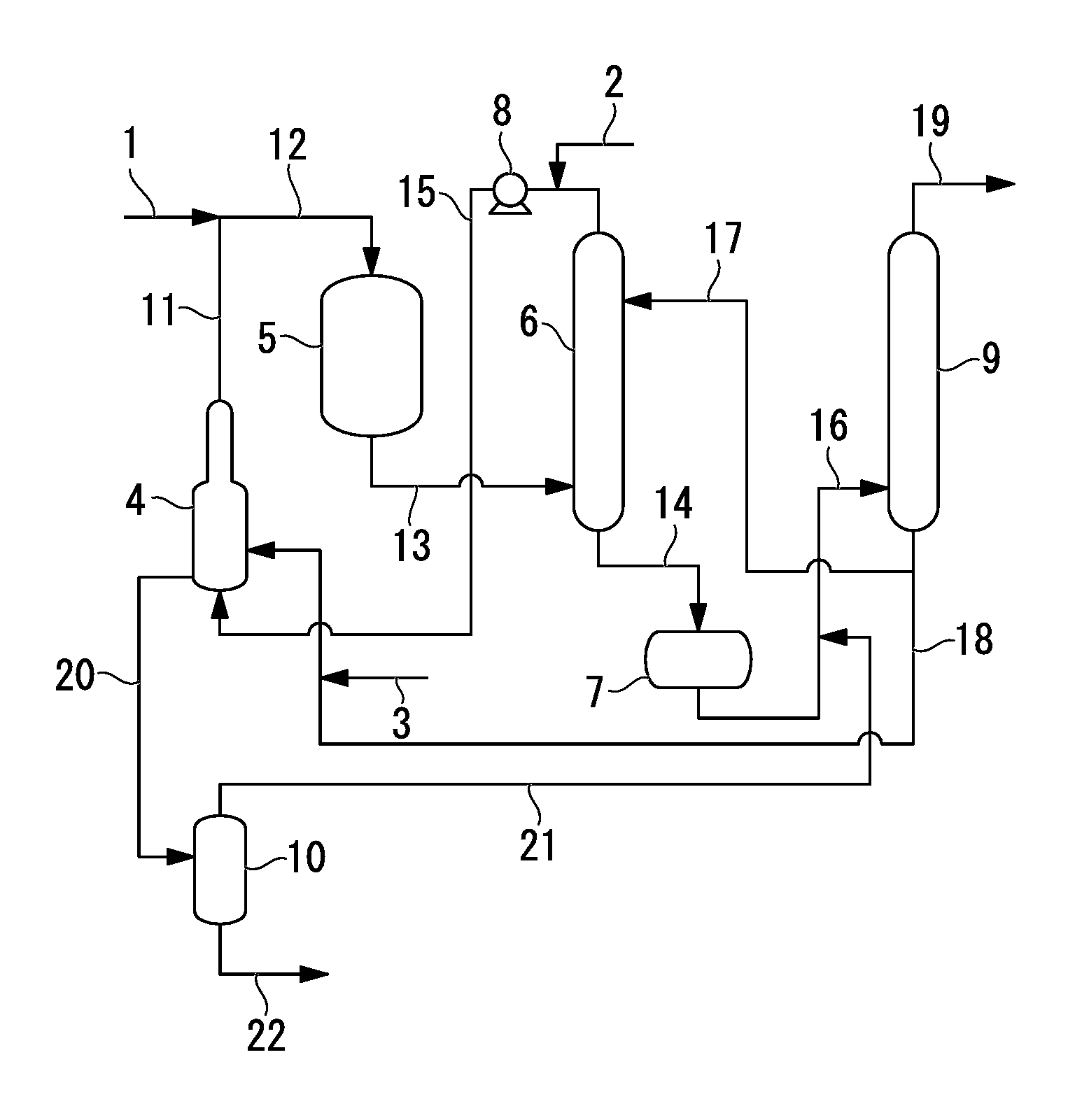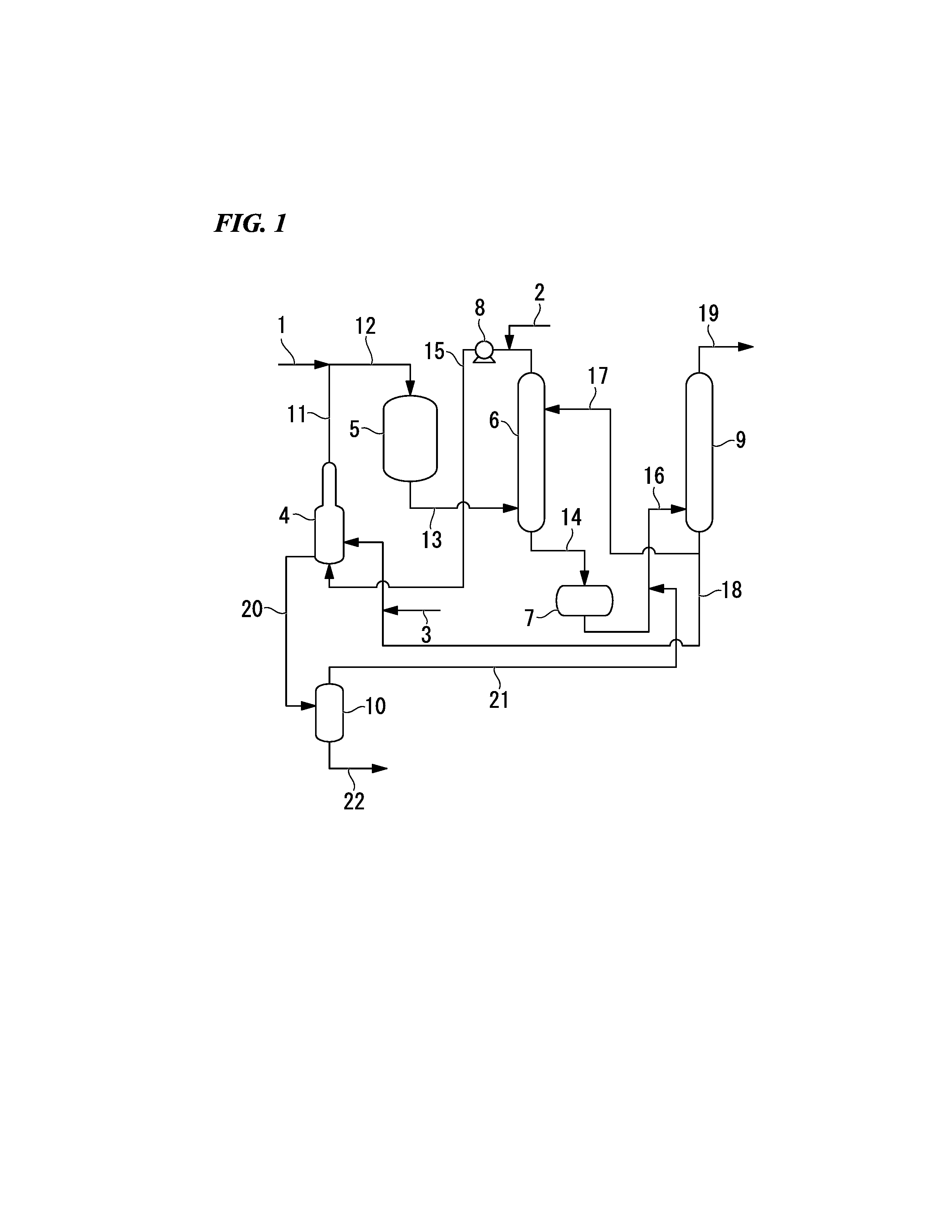Process for production of allyl acetate
- Summary
- Abstract
- Description
- Claims
- Application Information
AI Technical Summary
Benefits of technology
Problems solved by technology
Method used
Image
Examples
example 1
[0102]To 346 L of an aqueous solution containing 11.1 kg of sodium tetrachloropalladate (Na2PdCl4) and 1.5 kg of copper chloride dihydrate (CuCl2.2H2O), 1,000 L of a silica spherical carrier having a particle size of 5 mm (spherical diameter: 5 mm, specific surface area: 155 m2 / g, HSV-I manufactured by Shanghai Haiyuan Chemical Industry Science Technology Co., Ltd.) was added, thereby completely impregnating the silica spherical carrier with the solution. Next, this silica spherical carrier was added to 730 L of an aqueous solution containing 39.1 kg of sodium metasilicate nonahydrate (Na2SiO3.9H2O) and then subjected to an alkali treatment at room temperature for 20 hours.
[0103]Then, hydrazine hydrate was added and then the silica spherical carrier was subjected to a reduction treatment. After reduction, the silica spherical carrier was washed with water until chlorine ions are not detected. Next, the silica spherical carrier was dried at 110° C. for 4 hours. Furthermore, the silic...
example 2
Evaluation
[0122]In the same manner as in Example 1, the oxidation reaction of oxygen, acetic acid and propylene was performed, except that the reaction temperature of 135° C. in place of the reaction temperature of 155° C. After reacting for 4 hours and 166 hours, sampling was performed and activity of the catalyst was determined from the analytical results.
[0123]Four hours after initiation of the reaction, allyl acetate STY was 97 g / L-cat·hour and allyl acetate selectivity was 90.3%. After reacting for 166 hours, allyl acetate STY was 75 g / L-cat·hour and allyl acetate selectivity was 89.0%.
PUM
| Property | Measurement | Unit |
|---|---|---|
| Temperature | aaaaa | aaaaa |
| Temperature | aaaaa | aaaaa |
| Temperature | aaaaa | aaaaa |
Abstract
Description
Claims
Application Information
 Login to View More
Login to View More - R&D
- Intellectual Property
- Life Sciences
- Materials
- Tech Scout
- Unparalleled Data Quality
- Higher Quality Content
- 60% Fewer Hallucinations
Browse by: Latest US Patents, China's latest patents, Technical Efficacy Thesaurus, Application Domain, Technology Topic, Popular Technical Reports.
© 2025 PatSnap. All rights reserved.Legal|Privacy policy|Modern Slavery Act Transparency Statement|Sitemap|About US| Contact US: help@patsnap.com



